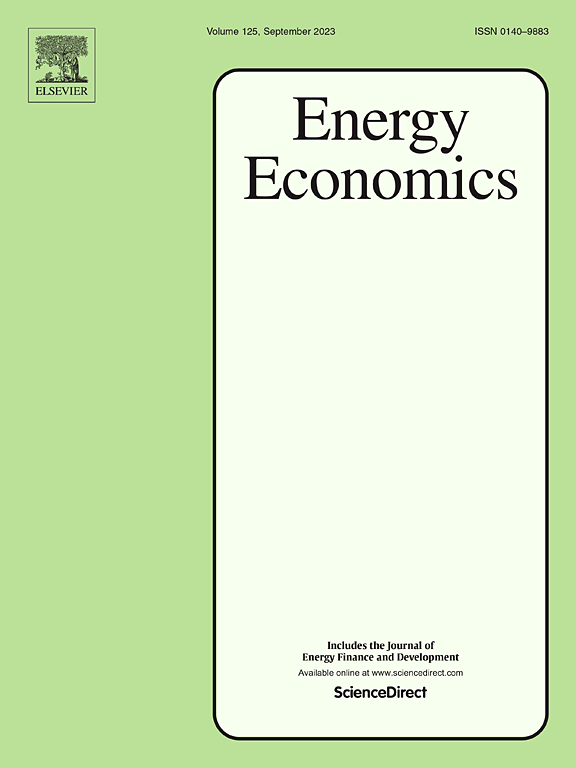Evaluation of the synergistic emission reduction benefits of pollution and carbon reduction and regional synergy network analysis in Chinese cities
IF 14.2
2区 经济学
Q1 ECONOMICS
引用次数: 0
Abstract
Achieving synergy in pollution reduction and carbon emission reduction is a pivotal approach to advancing green transformation and driving high-quality low-carbon development. This research assesses the synergistic benefits of pollution and carbon emission reduction and analyzes the regional synergistic network among 279 Chinese cities from 2005 to 2020. Using the marginal emission reduction cost method, the synergistic benefits of PM2.5 and CO2 reduction are quantified, while the temporal exponential random graph model is employed to analyze the dynamic evolution and driving factors of the synergistic network. Key findings include: (1) At the national level, synergistic strategies reduce marginal emission reduction costs, with benefits exceeding 45 %, achieving economic and environmental win-win outcomes. (2) Compared to separate reduction, synergistic strategies significantly lower costs, with final growth rates of 70.11 % for carbon reduction and 61.26 % for pollution reduction, far below 102 % and 99.23 % in separate reduction. (3) Significant regional differences exist, with cities in the Yangtze River Economic Belt and central region demonstrating stronger synergistic benefits. (4) Core nodes like Beijing and Shanghai enhance regional benefits through information and resource dissemination. The research highlights the role of synergistic reduction in optimizing resource allocation and reducing costs, offering scientific support for cross-regional governance and policy optimization.
中国城市污染与碳减排协同减排效益评价及区域协同网络分析
推进污染减排和碳减排联动,是推进绿色转型、推动高质量低碳发展的必由之路。本文对2005 - 2020年中国279个城市污染减排与碳减排的协同效益进行了评价,并对区域协同网络进行了分析。采用边际减排成本法,量化PM2.5与CO2减排的协同效益,采用时间指数随机图模型分析协同网络的动态演化及其驱动因素。主要发现包括:(1)在国家层面,协同减排战略降低了边际减排成本,效益超过45%,实现了经济和环境的双赢。(2)与单独减排相比,协同策略显著降低了成本,碳减排和污染减排的最终增长率分别为70.11%和61.26%,远低于单独减排的102%和99.23%。③区域差异显著,长江经济带城市与中部地区城市协同效益更强。(4)北京、上海等核心节点通过信息和资源传播提升区域效益。研究突出了协同减量在优化资源配置和降低成本中的作用,为跨区域治理和政策优化提供了科学支撑。
本文章由计算机程序翻译,如有差异,请以英文原文为准。
求助全文
约1分钟内获得全文
求助全文
来源期刊

Energy Economics
ECONOMICS-
CiteScore
18.60
自引率
12.50%
发文量
524
期刊介绍:
Energy Economics is a field journal that focuses on energy economics and energy finance. It covers various themes including the exploitation, conversion, and use of energy, markets for energy commodities and derivatives, regulation and taxation, forecasting, environment and climate, international trade, development, and monetary policy. The journal welcomes contributions that utilize diverse methods such as experiments, surveys, econometrics, decomposition, simulation models, equilibrium models, optimization models, and analytical models. It publishes a combination of papers employing different methods to explore a wide range of topics. The journal's replication policy encourages the submission of replication studies, wherein researchers reproduce and extend the key results of original studies while explaining any differences. Energy Economics is indexed and abstracted in several databases including Environmental Abstracts, Fuel and Energy Abstracts, Social Sciences Citation Index, GEOBASE, Social & Behavioral Sciences, Journal of Economic Literature, INSPEC, and more.
 求助内容:
求助内容: 应助结果提醒方式:
应助结果提醒方式:


